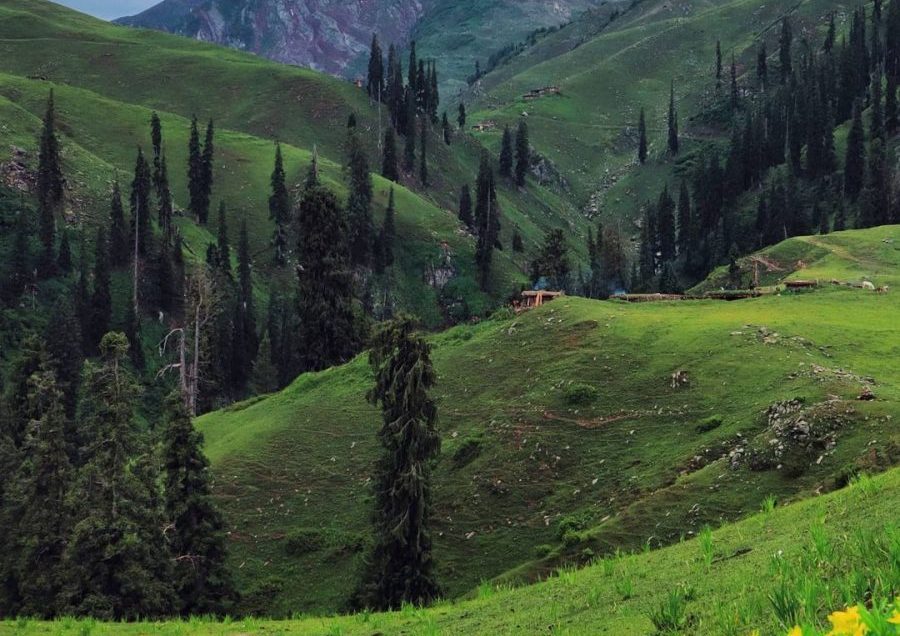One of the five major valleys of Gilgit-Baltistan, Pakistan, is the Kharmang Valley, also called Kartaksho. In 2015, the region was given its own district status, with Tolti serving as its interim administrative center. About 120 kilometers (75 miles) separate the valley from Skardu. Manthokha Waterfall, Khamosh Waterfall, Mehdi Abad Valley, and Kharmang Khas Valley are some of the nearby tourist attractions.
Kharmang valley is one of the most stunning tourist destinations. The Indus River joins Pakistani-controlled territory at Kharmang from the Leh area of Indian-controlled territory. For many years, the area was predominately Buddhist, with Tibet having a significant influence. Sufi missionaries introduced Islam to Baltistan beginning in the 16th century, and currently most of the population there are Shia Isn e Ashri Muslims.
For centuries, the rajas, the kings, blood ties, trade, shared values, and solid cultural and linguistic ties made Baltistan up of tiny, independent valley nations that were bound to one another and to Ladakh. The Dogra rulers of Kashmir compelled these nations to submit in the nineteenth century.
Location of Kharmang Valley
One of Gilgit-14 Baltistan’s districts, the Kharmang District is bordered on the north by the Skardu District, on the east by the Ghanche District, on the south by the Kargil District and the Leh District of [Ladakh, India], and on the west by the Astore District. Pakistan administered gilgit-Baltistan. The Kharmang Valley is one of the Baltistan Division’s five principal valleys. The right bank of the Indus from the Ladakh border to the village of Pari, and the left bank from the Shingo River’s source to the village of Tolti, make up Kharmang, an ancient area of Baltistan, according to the Gazetteer of Kashmir and Ladakh (1890).
History of Kharmang
Two words make up the Balti term kahrmang (khar means “fort” and mang means “abundant”). Ali Sher Khan Anchan, who constructed many forts in this area because of its strategic importance, gave the valley the name Kharmang. Baltistan’s District Kharmang includes the settlement of Tarkati. Skardu City is located 123 kilometers to the east of Tarkati Village. The Indian Army gave Tarkati its name during the Dogra era. Its origins include the Panjabi terms “Tar” and “Kati.” “Tar” means “coal,” and Kati” means “breakdown”.
The Balti word “Starghachan,” which means walnut, was the village’s former name.
The residents of Humzigone, Sinkarmo, and Morol villages crossed the Indus River through a “walnut tree” in the stone age, according to the legend behind the name.
In Gilgit-Baltistan, on the Indus bank, Tarkati is between both the Karakoram and the Himalayan Range of mountains
Population
There are people living in the Kharmang valley. There are roughly 20,000 houses or 60,000 people, most of whom live in dispersed settlements. Subsistence livestock raising, agriculture, unskilled labor employed abroad, and urban areas of Pakistan are the main sources of income. Most Kharmang people live and work in Kuwait, Bahrain, and Saudi Arabia. Besides a few Noorbakhsh residents who live near Mehdi Abad, most Valley residents speak Balti, [Shina], and practice Shia Islam.
What to do there
There are enormous waterfalls in this valley, lush green pastures, steep mountains, and fresh fruit. It suited this Valley for a wide variety of fruits because of its specific geographic features and temperature. Despite the fact that this valley has a wide variety of fruits. However, the unique apricots, apples, and cherries are grown in this valley are quite well known.
One cannot pass up the opportunity to see Manthoka Waterfall and Khamosh Waterfall in the Valley that is sandwiched between the enormous Karakoram Mountains.
Given that they are the tallest waterfalls in Kharmang, both waterfalls are significant to the tourists who come to see them since they offer the most pristine, entrancing scenery. The waterfall is stunningly beautiful. Nearly 250 kilometers of height is where the water originates. This waterfall is among Pakistan’s tallest ones.
By serving cool, freshly caught trout fish to visitors, the banks of these waterfalls provide a pleasant dining experience.
Livestock and farming are the two main sources of revenue. A considerable deal of agricultural land is distributed across the country, and tourists can enjoy seeing cattle running around freely on farms, especially in the Khamosh Waterfall area.
You would want to take pictures all the time because of the beautiful green fields and meadows. People don’t miss stopping and photographing the many breathtaking vistas along the way. Enjoy and capture the beauty of nature.
When to go to Kharmang Valley?
When visiting Kharmang, Pakistan, the best months to go are July through September because the weather is fairly comfortable during that time—not too hot or too cold and best in autumn as well.
Language
Shina is the primary language spoken by most people, while Balti is the primary language spoken by the minority of people in this hamlet. Urdu and English are second languages for both Shina and Balti speakers.


